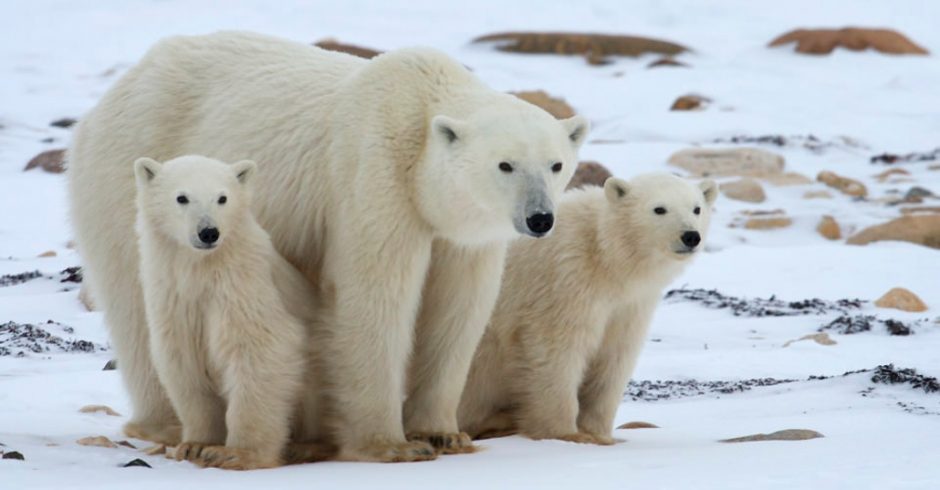
When is the Best Time of the Season to Photograph Polar Bears in Churchill, Canada?
As a Polar Bear Expedition photo guide, I get this question quite often. And it’s certainly a great one – within the brief six weeks that polar bears are migrating through the Churchill area there are more or less three distinct “mini seasons” that do have their own unique characteristics.
But which one is the best for photography?
The great news is that you can go in any of these three little mini seasons and have an extraordinary time photographing these kings of the arctic. But hopefully the following will give you a bit more photographic understanding of the merits of each.
Before I go into “exact” detail on dates and whatnot, please keep in mind that mother nature doesn’t always abide by the calendar. These dates are from years of experience, but are certainly no hard line in the sand (or snow!). Rather, they are reasonable estimates.
Beginning of the Season: Roughly Oct 11 – 24
This is a great time of year if you are interested in colors on the tundra. When I say “fall colors”, though, keep in mind that it’s the tundra’s fall colors. You aren’t likely to see any maples, birches, or aspens as far north as Churchill…but, you are likely to see reds, yellows, greens and browns in the colors of the grasses, willows, spruces, and tamarack trees. The colors can be extraordinary!

As long as you’re going with a reputable tour operator, you can be sure that you aren’t cutting it close as far as when the polar bears arrive for prime viewing. Generally, the bears come off the ice around Churchill around late July, so they are getting more and more dense in the Churchill area as August turns into September and September into October. Below, you can see the dramatic contrast of white bears wrestling with a reddish-brown background of willows — makes for a popping photo, doesn’t it?

Another key benefit at this time of year is that the weather is generally more mild – think highs and lows around 32F, right around freezing. If you run cold and would prefer a more “balmy” arctic environment, pick the first couple weeks of the season.
Last, at this time of year, when snow is unlikely to be on the ground, the white coloration of the wildlife really stands out – not just for spotting, but also for photography. Take a look at this sharp photo of an arctic fox curled up surrounded by the colors of the “fall tundra.”
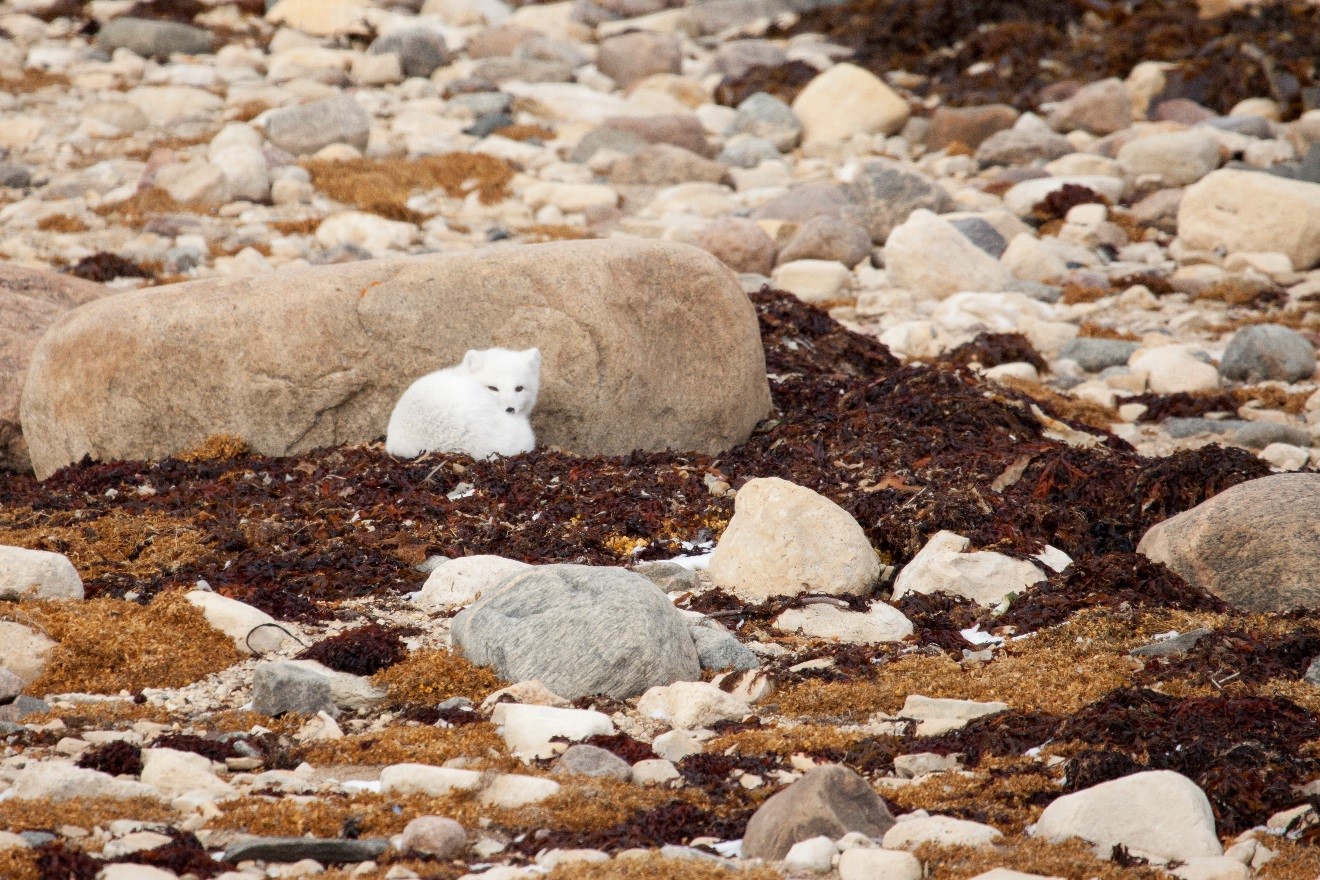
Middle of the Season: Roughly October 25 – Nov 8
These two weeks are right smack in the middle of the season. When it comes to any animal migration pattern, it can be safe to aim for the middle, as any anomalous weather isn’t likely to have major impacts on wildlife behaviors. However, it’s key to keep in mind that this middle season is also the most unpredictable in terms of daily weather. There’s an equal chance of it being a high and low of 32F as it is 10F each day.
The good thing is that the bears love it when it’s cold outside! Remember, they’re used to roaming around and hunting in the winter, when it’s -45F outside! Thus, when the temperatures drop, bears often become more active.
The middle season is also when you’re likely to get some snow falling, as well as snow beginning to stick on the ground. From a photographic standpoint, this can be a really nice attribute – white bears on white snow is truly captivating! The photo below is of a large male just after a dusting of snow occurred, lightly covering the willows and grasses as it accumulated more and more overnight.
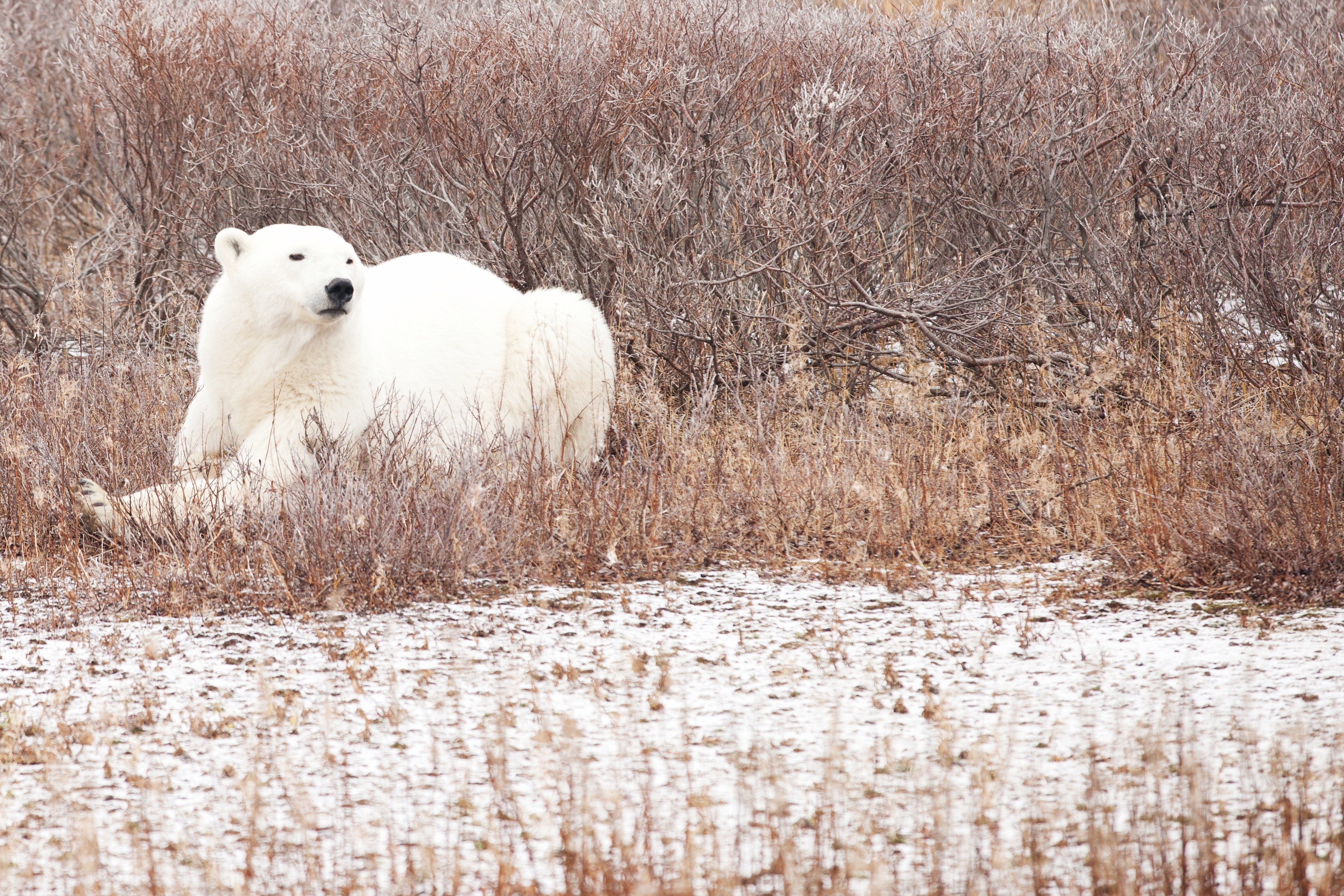
With the snow comes weather, though, so do be ready to feel the full force of the arctic if you’re traveling to Churchill in this “mid season”. In addition, while wildlife can be wonderfully photogenic in the mid season, they can also be a little more challenging to spot because they are employing their true camouflage. This is when going with pro naturalist guides is a must.
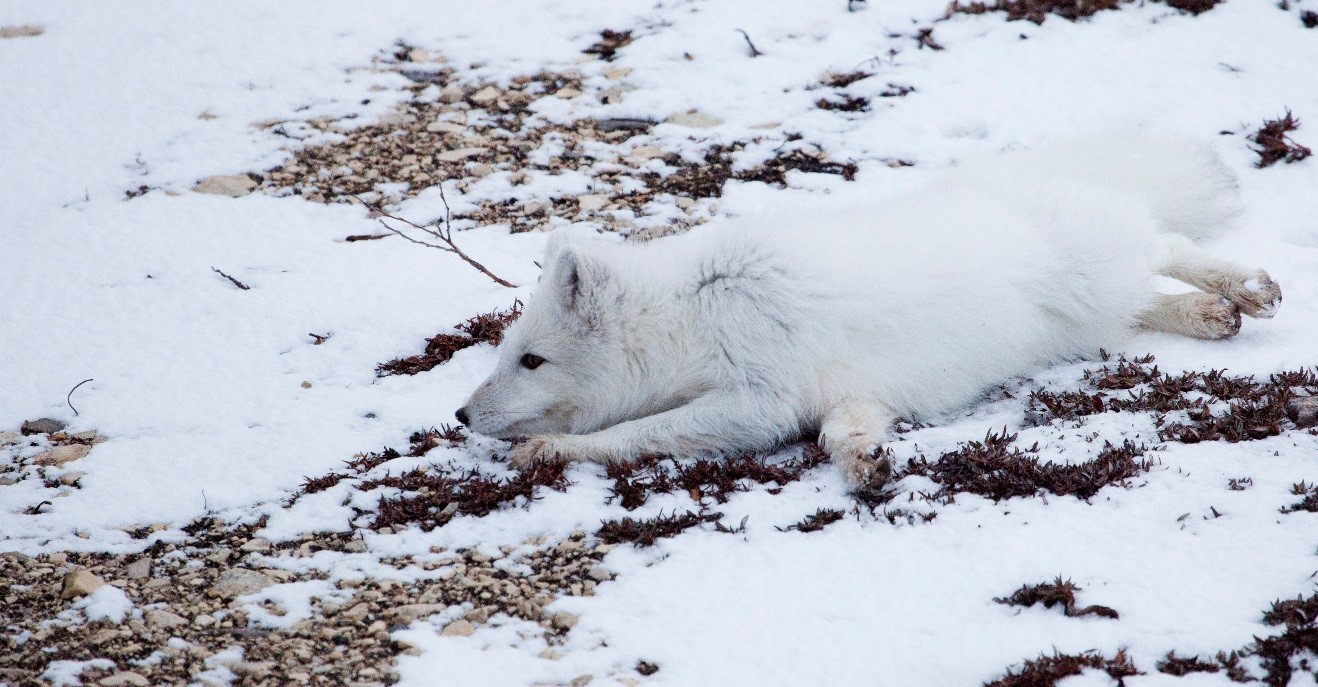
End of the Season: Roughly Nov 8 – 21
It’s a known fact that polar bears reach their highest density in and around Churchill about one week before the ice freezes on the Hudson Bay. So, going in the latter part of the season can be some of the best viewing and photography of polar bears all season. However, there is a slight risk that if the bay freezes early (like it can unpredictably do every 20 years or so), you may have to spend more time searching for bears. But, with risk can come great reward.
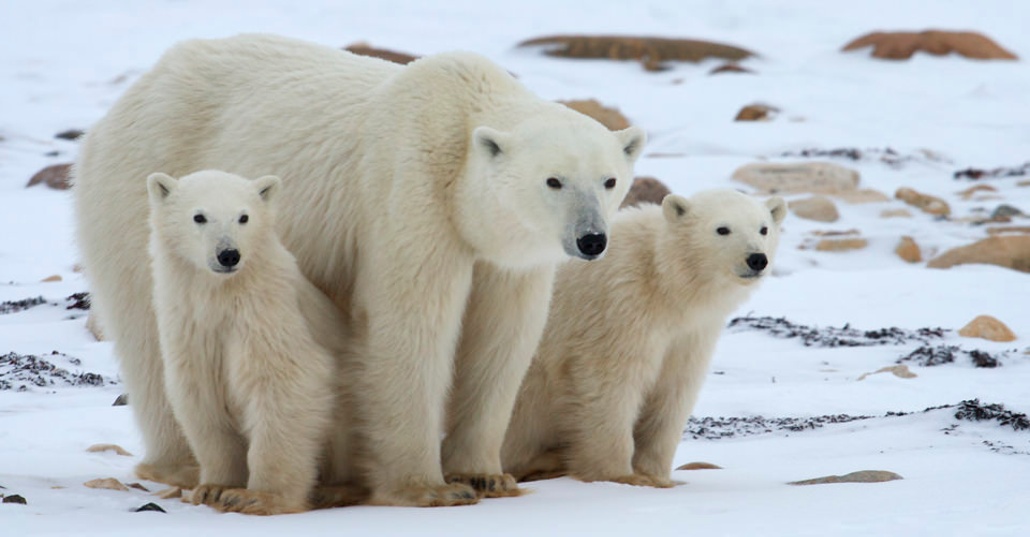
The last two weeks of the season is also going to be your best time for snow. Typically speaking, most people heading up to the arctic to photograph polar bears have the image in their mind of bears on snow or ice. If this is you, then highly consider planning your adventure at this time of year. While year to year conditions do vary, it’s pretty typical for snow to be on the ground and to be sticking at this time of year. In addition, ice begins to form around the inland ponds, which is another great photo opportunity. All in all, this is your time to photograph the “harsh arctic”, which to be honest, is very photogenic. Below, you’ll see two males standing on freshly formed ice just on the edge of the bay, prior to the bay freezing over.
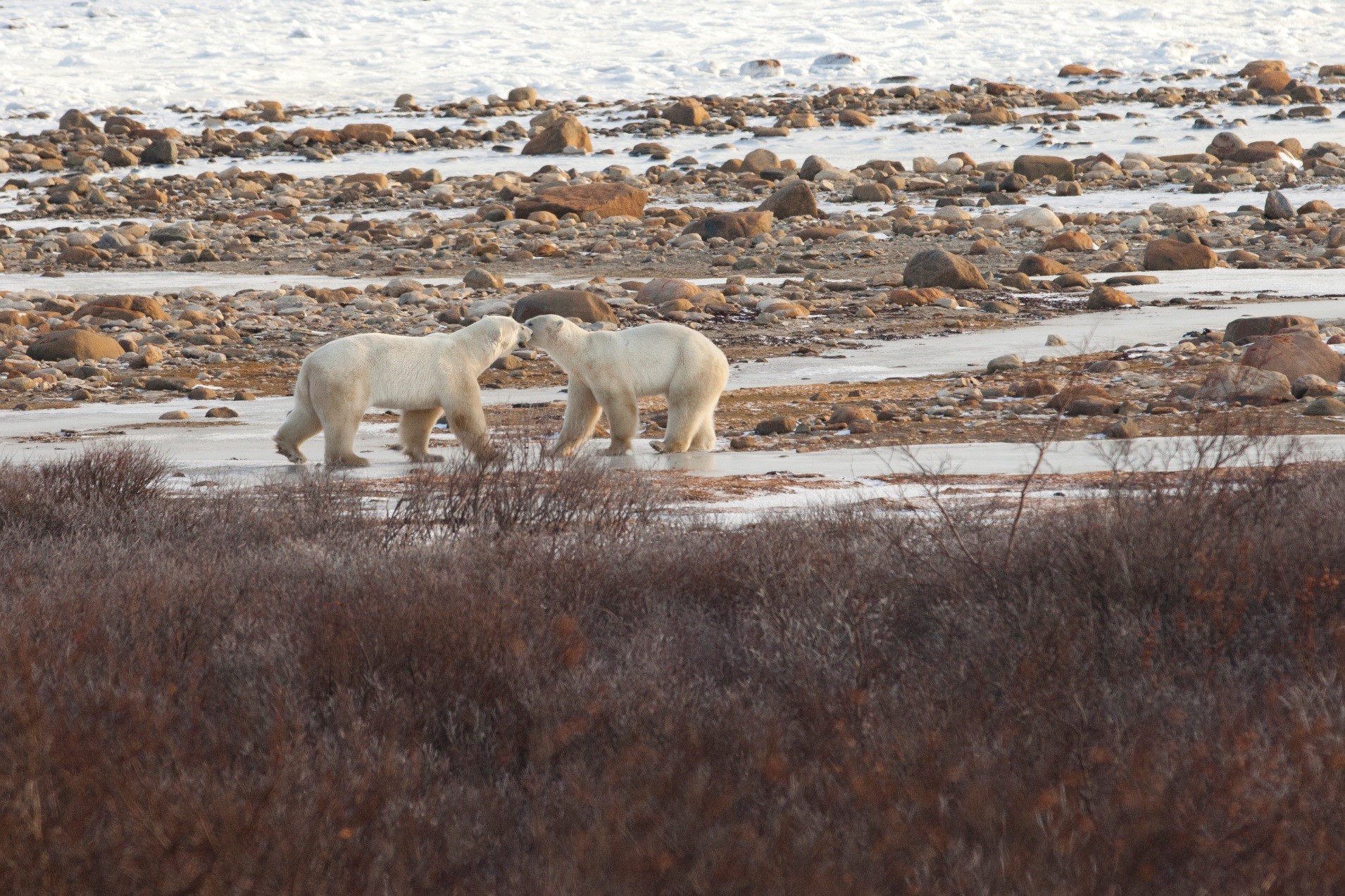
At the end of the day, it’s rather difficult to define set seasons within such a short six week window in such a tumultuous area of our world climate-wise. Even the above photo, where ice is forming, shows you that you can still get interesting colors on the tundra, rocks, shoreline, etc., even later in the season. And, you’re not always guaranteed to get a full covering of snow, even if you’re up there towards the end of the season.
To be honest, my main recommendation is to make sure you go with a tour (I’m quite partial to Natural Habitat Adventures’ Polar Bear photo expedition! — because I lead that one!) that is going to get you in the right position, right light, and supply the right guidance when watching and photographing these magnificent bears. Do that, choose the season that you think aligns best with your expectations, and I’ve no doubt you’re going to come home with photos that you have been dreaming about for a lifetime.
Hope to see you out there!
Leave a reply